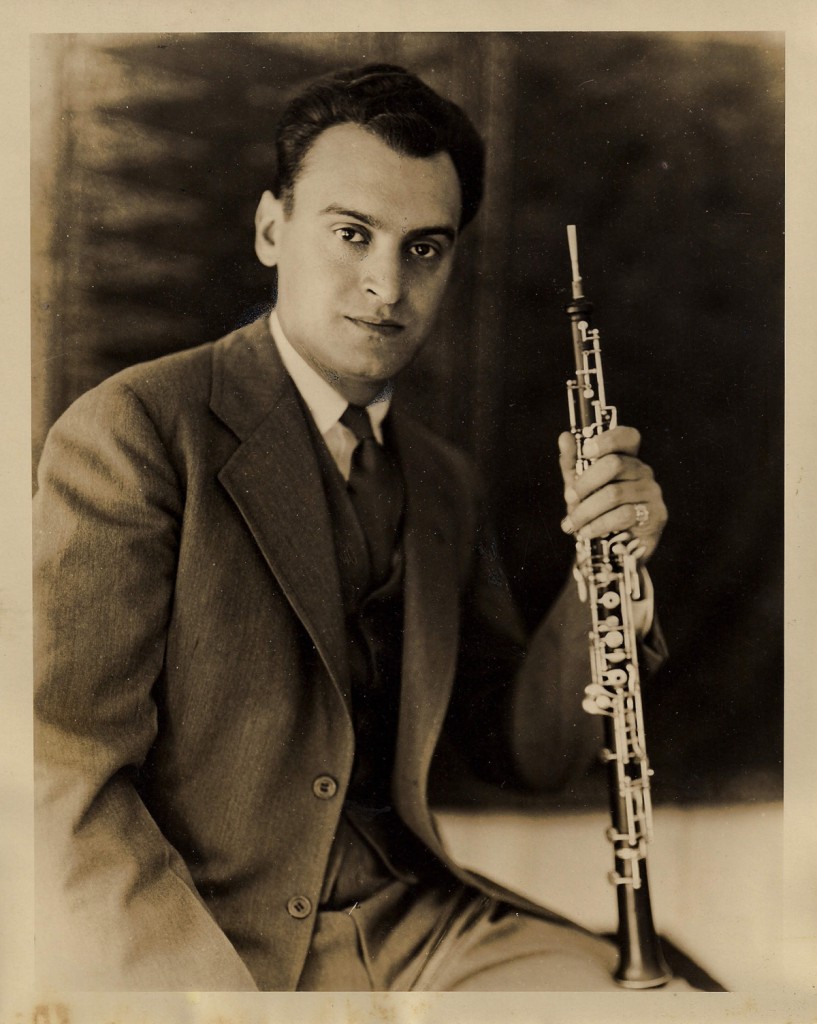Robert Bloom (1908-1994) was one of America’s greatest oboists. He was my teacher’s teacher and I have always loved the many recordings of his playing with Toscanini and the NBC Symphony Orchestra, and especially the gorgeous obbligato oboe parts with the Bach Aria Group. Here is a wonderful description of how he developed ease in his playing, from Robert Bloom: The Story of a Working Musician, edited by Sara Lambert Bloom. He is describing how he prepared for his first performances with the Bach Aria Group:
And suddenly I realized, “My gosh! I’m going to be standing up in front of that stage. I’m going to be the only oboe player on the stage. And I have to play all of these arias!” And then, not only that, but I thought of all the oboe players I knew, of how they looked when they played and how they were suffering, and I thought, no, I didn’t want that to happen.
I have great pride. I’m vain. And I wanted people to listen to me just as they listen to a violin. Not to say when it’s finished, “Wow! He got through it!” If I wanted them to listen to the music, I had to look as though I wasn’t dying! Even if I was.
So I did a very deliberate preparation…I got the idea that I was going to look good when I play the oboe. I had a nice long mirror, and I stood in front of the mirror to play. And if I saw my head go on the side, I’d say, “No. It’s not necessary for the head to go on the side. Straighten up.” One shoulder would come up—and I’d push it down. I found all kinds of physical mannerisms that I was indulging in that were unnecessary and that, in fact, many times actually increased the physical tension. So I worked hard to make it look easy. Now, believe me, it wasn’t easy, but I made it look easy. I wanted people to listen to me play, not marvel at my physical stamina.
A very strange thing happened, a wonderful thing. In trying to make it look easy, it actually became easier! Not easy, but easier. You know, now, I’m an older guy, I have to work harder. But when I was younger, I’d play and invariably I’d get the same reaction: “But you make it look so easy!” It wasn’t easy, but I worked on it. I think you owe it to your audience to make them feel comfortable.
I work with students on this right from the beginning. So many times you’ll find a player, even students, who make it look more difficult than it actually is, and it’s analogous to these tightrope walkers in the circus who deliberately worry the audience. I don’t feel that there is any place for that in music. No grandstanding.
I like to tell people who compliment me on how I make playing the oboe look easy, “It’s taken a lot of hard work to make it look easy!” I love Bloom’s description of how he transformed his oboe playing, and find it very inspiring. A much more detailed account of a similar transformation can be found in “The Use of the Self” by FM Alexander. He gives vivid insights into the psychology of change as he describes how he used a mirror to improve his performance as an orator. Today we have easy access to video technology, an even more effective means of seeing how we look to an audience than either Alexander or Bloom had. In fact, while I was editing the performance videos uploaded on this website, I noticed many of my own unnecessary habits, and since then I have been working with a mirror in the practice room to undo these habits when I perform. I’ve learned that when it looks easy, it feels easy. And vice versa. So I encourage each of you to find creative ways to practice so you play with accuracy, beauty, and ease.
